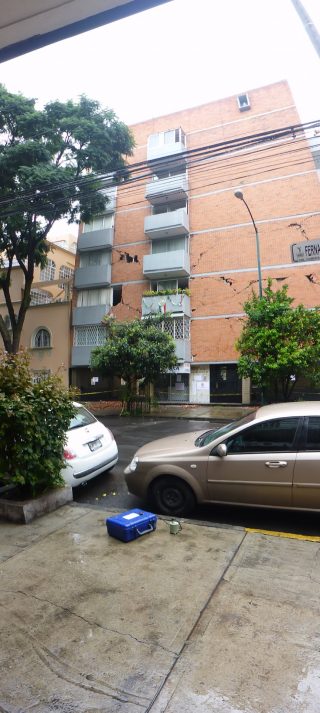
Some buildings in the La Condesa neighborhood of Mexico City collapsed due to the recent earthquake, while other buildings did not. His team is trying to understand why.
Civil engineering professor Clint Wood is in Mexico City this week studying the recent earthquake’s impact on buildings and infrastructure in the area. Wood was chosen to participate in a Geotechnical Extreme Events Reconnaissance, or GEER, mission sponsored by the National Science Foundation.
Wood’s research focuses on the dynamic characterization of soils. He uses broadband seismometers to measure low-intensity stress waves. By measuring the frequency and wavelength of these waves as they pass through arrays of seismometers, he can estimate the shear-wave velocity and layering of the soil underneath the arrays. Understanding the shear-wave velocity of the soil helps engineers understand ground motions recorded during earthquakes and will contribute to the design of buildings that can better withstand future earthquakes.
Below is Wood’s account of his experience in Mexico thus far.
We’ve spent that last two days in a neighborhood of Mexico City called La Condesa, where there we several areas that had a number of building collapse, while other areas were relatively unaffected. Teams are assessing the damage to each of the buildings, documenting building type and taking settlement or crack measurements. I’ve been making shear wave velocity and site period measurements at each site to understand what role soil played in the damage. For example, my group is trying to determine where specific soil under the buildings or areas caused larger amplifications compared to other areas, and whether the natural period of the collapsed or damaged structures matched the natural period of the soil deposit. This double-resonated effect of building and soil match can result in significantly higher seismic demand on the structure, contributing to damage.





You must be logged in to post a comment.